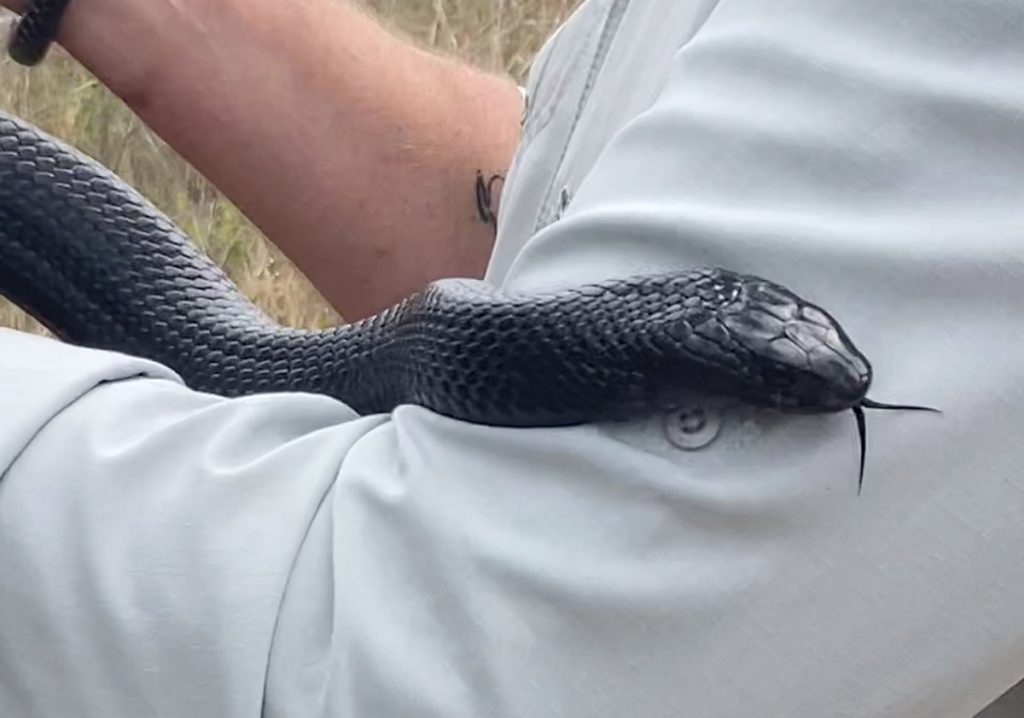When I signed up to help release eastern indigo snakes at The Nature Conservancy’s Apalachicola Bluffs and Ravines Preserve, I expected that I would be meeting 5 or 6 people. By the time we loaded into four-wheel drive capable vehicles and drove out to the release site, there were more than fifty people who had gathered from across several different wildlife organizations including the Nature Conservancy (TNC), Florida Fish and Wildlife Conservation Commission (FWC), The United States Fish and Wildlife Service (USFWS), and the Orianne Center for Indigo Conservation (OCIC)—an indication of how big of an undertaking releasing these snakes is, and how much cooperation across Florida and national organizations it requires.

It’s the seventh consecutive year that TNC and its partners have been reintroducing eastern indigo snakes at the preserve. Eastern indigo snakes are an apex predator whose historic range included all of Florida as well as parts of southern Georgia and southeast Alabama. Through releases like this one, these snakes are now being returned to their historic range. The WFSU Ecology Blog covered last year’s release, but we jumped at the opportunity to go back to help release more snakes and see how the project is progressing.
The million-dollar question remains: are these indigo snakes breeding?
As I was handed a writhing pillowcase to take out to the field, knotted at the top and affixed with an orange identification tag, I asked Brad O’Hanlon if the released snakes were successfully breeding at the preserve.
“That’s the million-dollar question,” Brad said. Brad is FWC’s Reptile and Amphibian Conservation Coordinator. He went on to explain that ultimately a successful reintroduction comes down to the animals being able to sustain their own population without human interference.
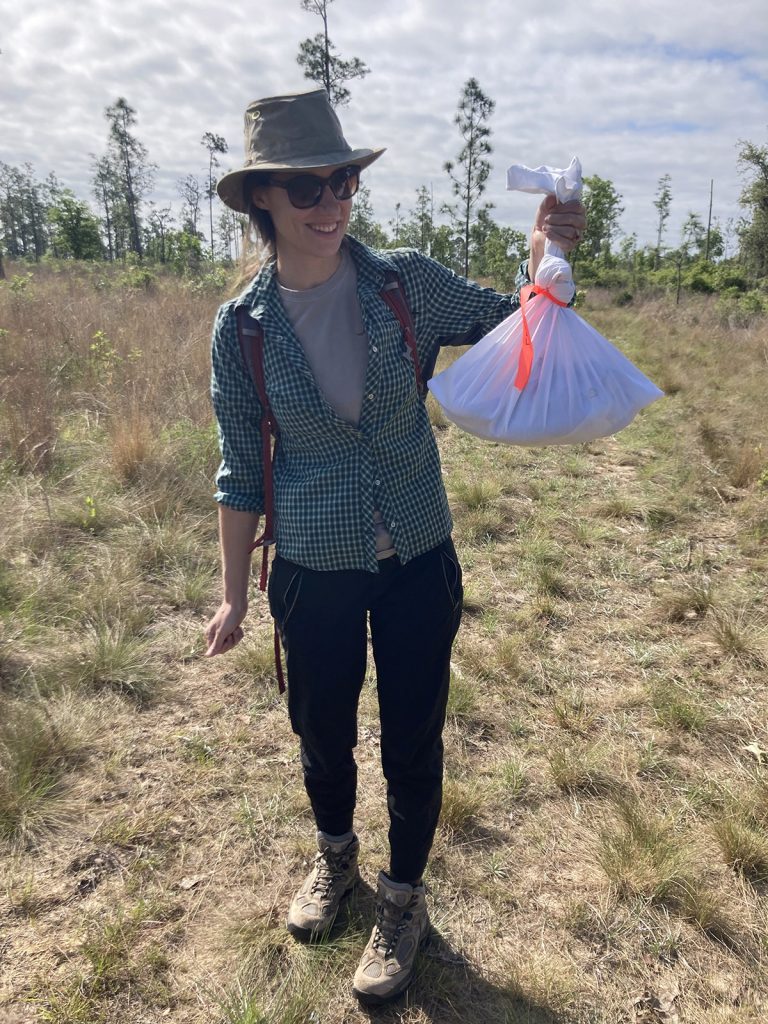
A big part of answering this question comes down to weeding through the photos that TNC has been collecting. These pictures could potentially show juvenile snakes. They also provide data about the released snakes and how they move across the preserve. By studying these photos, TNC staff have gotten a sense of how active the snakes are, how well they have acclimated to their new environment, and how they are moving all across ABRP. Before we headed out to the preserve to release the snakes, David Printiss, The Nature Conservancy’s North Florida Program Manager, spoke about the program and how happy they’ve been so far with the results—how the snakes are doing exactly what they hoped and expected they would.

Throughout the preserve, drift fences are set up to guide snakes through an overturned bucket that houses a camera that captures photos of the snakes. Additionally, cameras are set up outside several gopher tortoise burrows throughout the preserve. Eastern indigo snakes are one of many species throughout the preserve that depend on gopher tortoise burrows. As burrows can be up to 30-40 feet deep, they are large enough to house several species at once. When we released the snakes, we released them right outside tortoise burrows, which provide the snake with a stable temperature, stable humidity levels, and shelter.
The cameras outside of tortoise burrows take photos every thirty seconds. With so many cameras, TNC has amassed hundreds of thousands of photos. Going through these photos is a big project for volunteers and TNC interns and staff that has led to and will continue to lead to more answers about the success of this program.

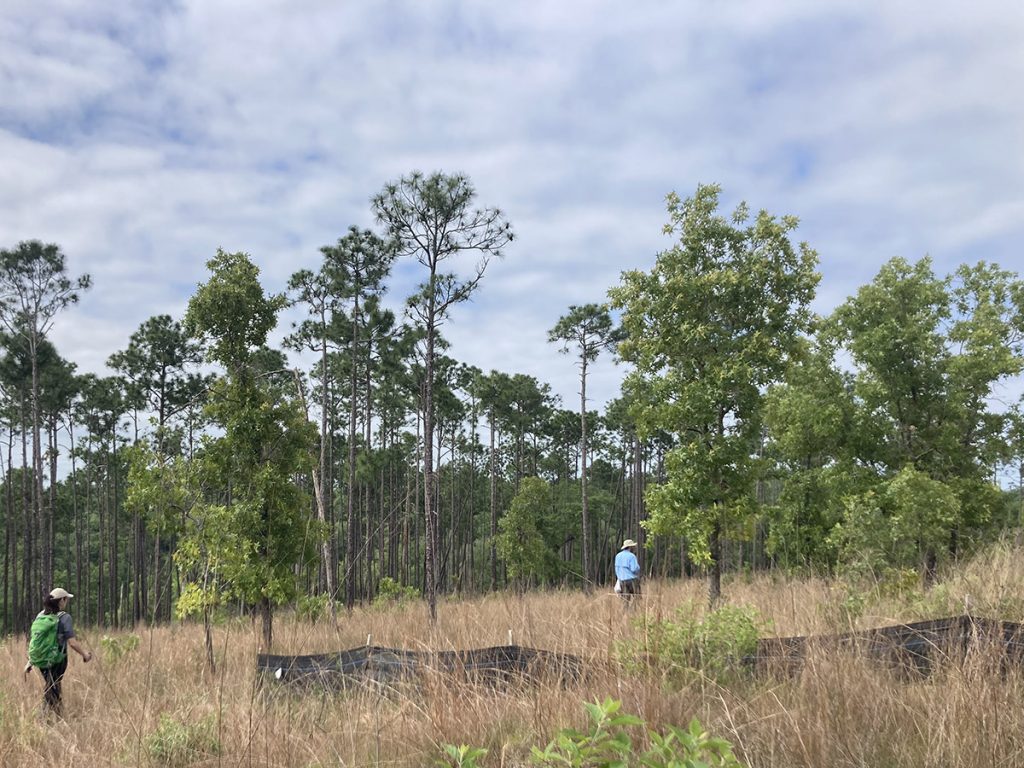
Releasing Snake #527
My writhing pillowcase was one of 19 snakes that we would release. Because so many people had come out to release the snakes, we were divided into smaller groups, each group receiving 3-4 snakes. My group had three snakes and we trudged across a longleaf forest to find tortoise burrows in which we would release the snakes.
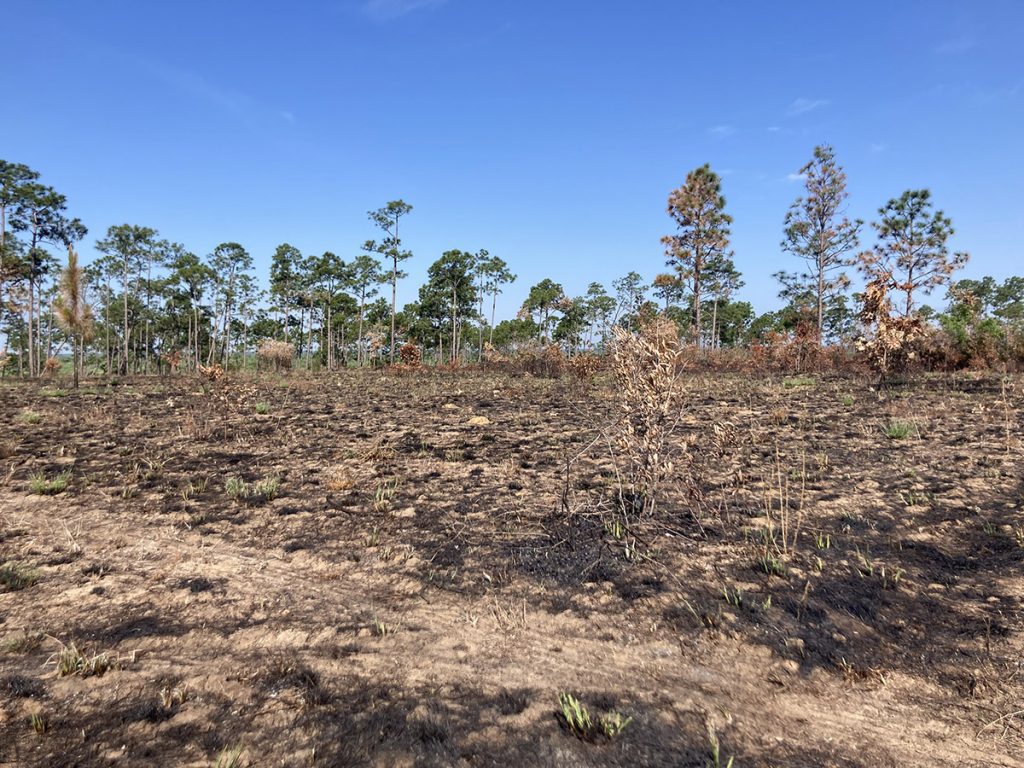
Sections of our forest had recently been burned, as is necessary for longleaf pine management, and we could already see tiny tufts of wiregrass peaking up from the charred earth.

When we found a hole for my snake, I crouched down in front of a burrow and untied my pillowcase. Inside, an inky black snake, several feet long, slithered against the white cotton. I reached down and grabbed his thick middle section and pulled him out. He squirmed and I was startled by how strong he was. He bent his body and tried to free himself of my grasp. As his black tongue flickered in and out of his mouth, Brad showed me his coral chin, a characteristic that helps differentiate these snakes from other black snakes, like black racer snakes. He also showed me how individual snakes have unique scale patterns. If you are extremely knowledgeable, you might recognize a specific snake by their unique patterns.

The snakes we released are juveniles. About 2.5 years old, they were about three feet long when we released them, but in three more years they should be fully grown. At full size, eastern indigos can reach up to 8.5 feet long and weigh up to 10 pounds.
Eastern Indigo snakes are known to be very docile. They aren’t venomous and they don’t bite their handlers—attributes that made me more comfortable handling my snake. I held the snake for a few moments before releasing him in front of a tortoise burrow. He slithered right in, happy to see his new home.
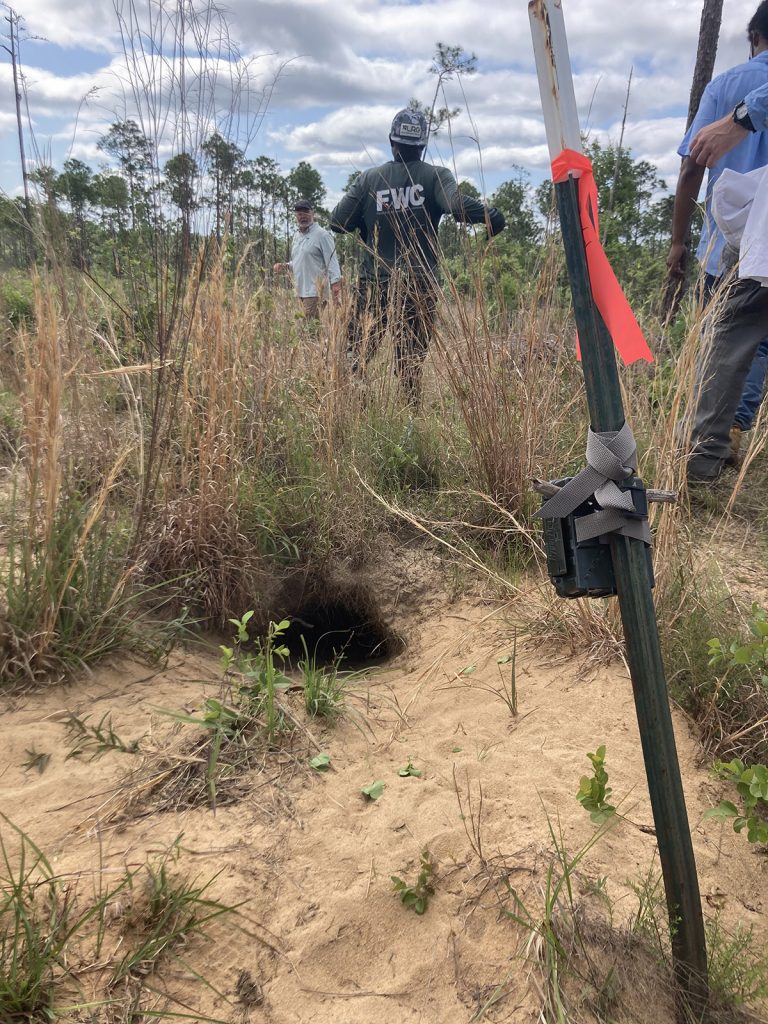
The Future of the Program
Including the 19 snakes we released, 126 snakes have now been released at Apalachicola Bluffs and Ravines Preserve. Each snake is tagged with a microchip and has a unique number assigned to it. If TNC members catch a snake, they can scan that snake to identify its microchip, allowing them to collect and record data on individual organisms. As the program continues to grow, TNC will continue to collect and analyze their data. They are also already making plans to release more snakes in spring 2024—I hope I get a chance to go out again and see this rare apex predator returning to the wild!
